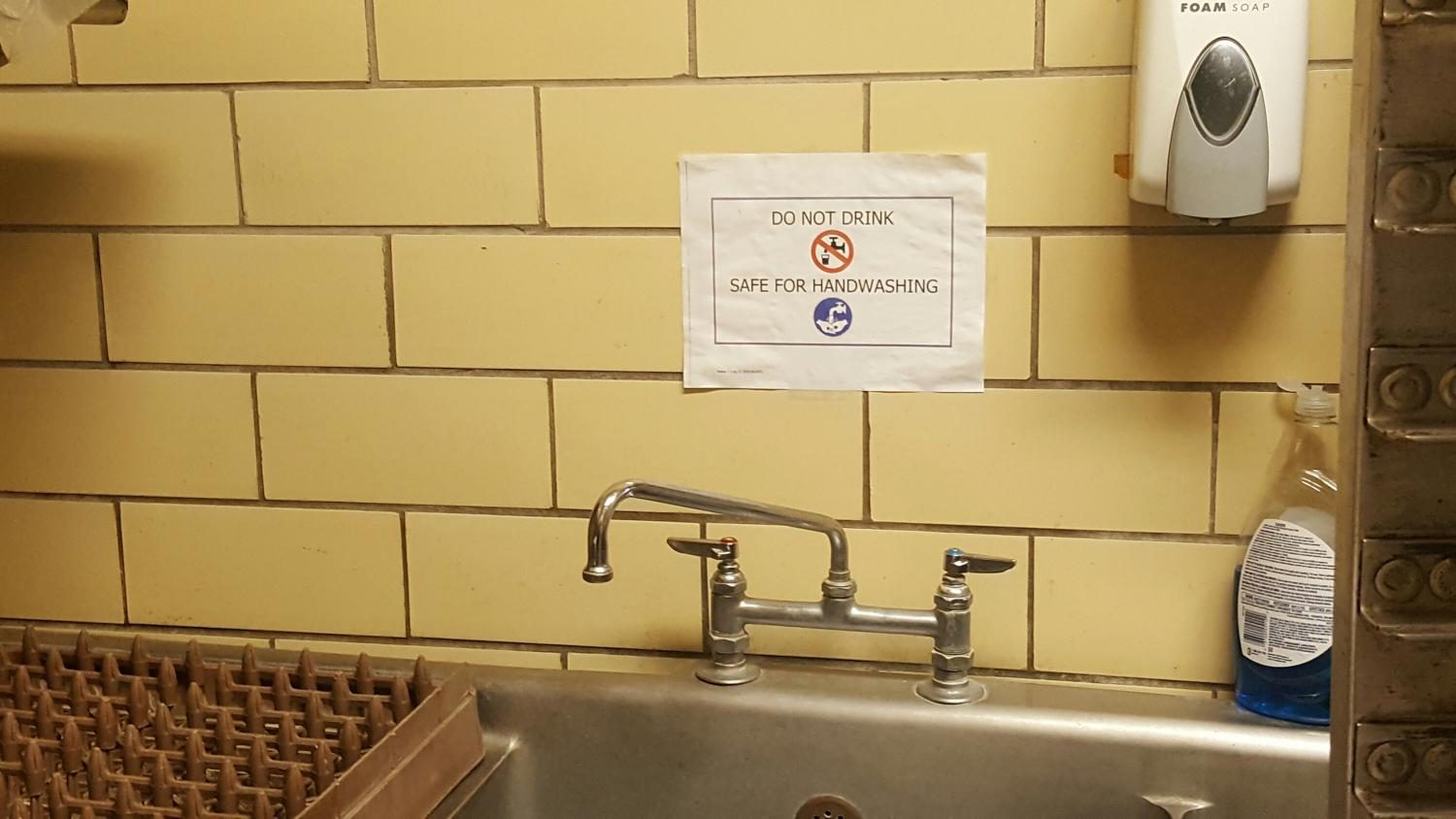District water lead test levels spark remediation efforts, retesting
Photo Credit: Ben Solomon
Testing 194 samples in the district, officials discover that 25 water outlets exceeded the legal limit of 15 ug/l in parts per billion. The sink in cafeteria cookie room is one such spigot, now advising that the water is not for consumption.
June 1, 2017
The Glen Rock Board of Education conducted drinking water tests during the past spring break and recently published the results.
According to the Department of Education, the state of New Jersey adopted regulations regarding testing for lead in drinking water in public schools on July 13, 2016.
The tests were conducted through LEW Corporation, an environmental consulting company.
Samples from different drinking water sources and food preparation outlets were “collected in 250 mL wide mouth plastic containers,” as stated by the report published by LEW corporation.
Lead usually enters the water through plumbing done many years ago, when solders and piping were made with lead.
After the tests were administered, it was found that 25 of the 194 samples in all five school buildings had more than 15 parts per billion (ppb) for lead. Five samples in the high school were over the 15 ppb limit.
“After we do the first test, anything that was higher than 15 ppb we have to go back and do a second test to validate the first test,” Sandy Marinos said.
Marinos is the Director of Building and Grounds. She is in charge of all five school buildings and the grounds and security for the district.
“I have to take care of anything that comes up, any emergencies that come up. Whether it’s heating emergencies, air conditioning, broken plumbing, lights, you name it,” Marinos said.
Secondary tests are performed in case there is a fault in the original test such as “something that got in through the water” or “something that was inadvertently in the cup.”
The secondary tests have yet to be administered but should be performed in June.
“Either [the results] will come back as pass or if it still fails we may have to change the spout, the plumbing or we may have to add a filter to it,” Marinos said.
Although only 25 samples taken were over the legal limit, any amount of lead in the human body isn’t healthy.
“It doesn’t mean that 14 ppb is safe it just means that 15 ppb is too high and they have to take action,” said Mrs. Mary Ann Battersby, a chemistry teacher, “It’s a legal limit, it’s not really a health limit.”
According to Battersby lead has a big impact on the nervous system, especially the developing systems of children. Lead in the nervous system can cause learning disabilities and developmental delays.
Although it affects children more negatively, adults and young adults with mature nervous systems will be affected but with less severe effects.
Battersby would like to see sinks with less than 15 ppb be labeled “so people using the faucet know how much lead they’re getting in their drinking water so they can make an educated decision.”





